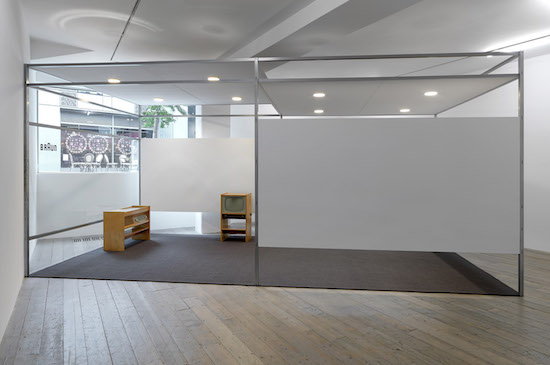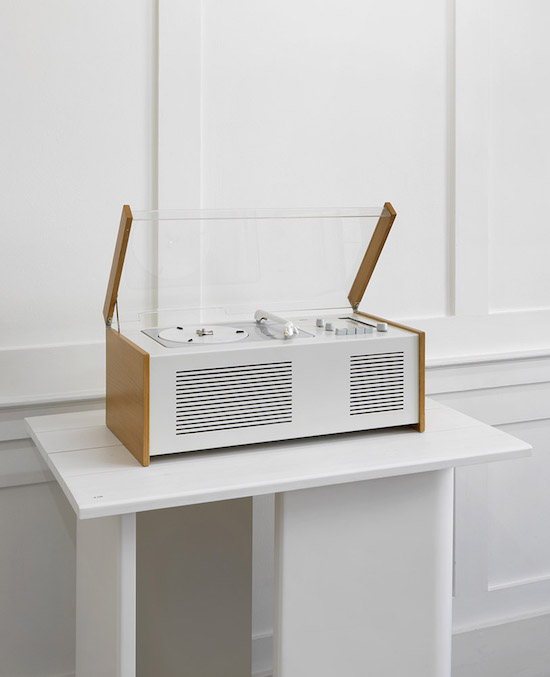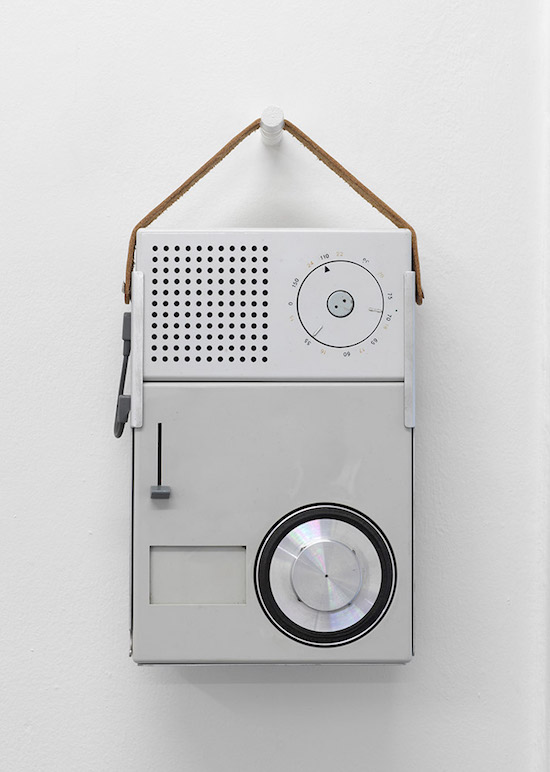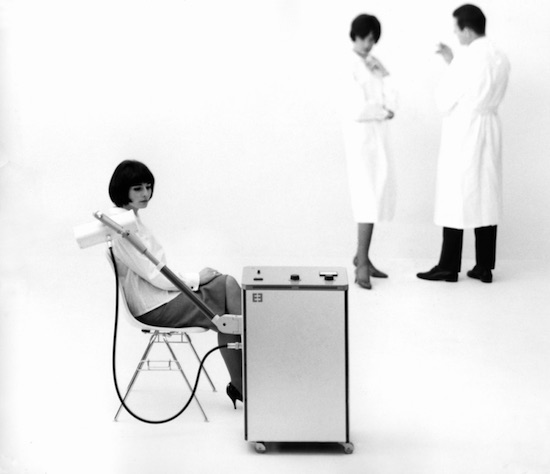It’s appropriate for an exhibition telling the story of a school that Raven Row’s The Ulm Model has numerous aspects to its curriculum – sure, one can enjoy the displays of particularly undulating exercises and post-war works of product design in isolation, but there’s also two pretty smashing works of paratext (an exhibition guide and an essay, both by curator Peter Kapos) that are a joy for anyone whose interests lie at the intersection of design, art, philosophy, pedagogy and politics.
These components tell the story of the Hochschule für Gestaltung, a school that opened in Ulm in southern Germany in 1953, originally focused on “the reconstruction of progressive German culture” after the second world war. Notorious Swiss designer and Bauhaus alumnus Max Bill came aboard, designing the school’s buildings and focusing things around industrial design. Bill was then muscled out by a new set of lecturers with a vision for further integrating the role of designer within the production process.
Throughout the course of the school’s existence, many famous names interweaved with the institution and appear throughout the exhibition – founder and graphic designer Otl Aicher, Hans Gugelot and Dieter Rams, for instance. This is because the school’s ‘Model’ for education involved students working in groups, overseen by a tutor, that dug into meaty corporate commissions for the likes of Braun and Lufthansa.
But at Raven Row, the relatively anonymised displays (there are no wall texts here), are reflective of school’s belief in the work of the collective: things are pleasingly contrary to the standardised canon of design history that centres around names like Rams’s.
Objects are not placed by chronology or designer. The culminations of the commissions – for instance an example of Braun’s 1960s audio-visual equipment – are set alongside preliminary student exercises that are so engaging in their shapes and experimentation (curvaceous digits and interconnecting polygons are abundant) as to show just how spiked with inspiration the Ulm tapwater was.
Already, however, Ulm’s contradictions start to appear. The collective was valued, but history would soon seek to find the ‘genius’ individuals to herald. The corporate money that the school ran on become problematic. As the scientific aspects of the curriculum grew, the harder it became for the designers to act as critics. The aim to build a future full of potential, and to create a model for social life, would be undermined by the bickering of the school’s staff that would eventually provide the backdrop for the plug to be pulled on the Ulm project.

Courtesy Braun P&G/Braun Collection, Kronberg. Photo by Marcus J. Leith
Still, curator Kapos’s philosophy about the work from this embattled institution is that “despite the many disavowals, something of the character of the artwork [italics my own] remained preserved within even the most scientistic of the school’s outputs.”
And that is certainly true, whether or not every object here is totally at one with the school’s philosophy of integrated, function-led design.
Wallpaper, tableware, screwdrivers, shavers, record players, radios, bed frames, calipers, slide projectors and parking meters; the outputs of those that passed through or aligned with the Ulm were certainly diverse.
And when displayed, the ubiquity of these objects’ pleasingness nearly acts to dull the effect of the whole: it’s necessary for the exhibition guide to continually remind the viewer how often something is not just practical and beautiful, but also novel. Phrases like “set new standards” (visual identity guidelines for Lufthansa by Otl Aicher et al, 1962-63), “a novel use for the material at the time” (the plexiglass lid of a turntable by Hans Gugelot, 1956) and “a new material vocabulary” (Braun shaver by Gerd Alfred Muller and Hans Gugelot, 1962), abound.

Courtesy Braun P&G/Braun Collection, Kronberg. Photo by Marcus J. Leith
But to concentrate solely on the beauty of the things would bely the gorgeousness of all the bitchiness. Everyone knew the future of design learning was at stake. The Ulm wars would shape the university courses of the future.
Reading about tutors coming to academic blows over the social impact, or even the social creative powers, of good design, makes one wish that a sense of the future being truly at stake was now more than the preoccupation of those labelled outliers. The educators of an age fought for their vision of the world of design, and the world at large, through their products and student guidance.
But it is also important to puncture these heady discussions, and the display of products as artworks, in order to highlight the domesticity of much industrial design. At Raven Row, that fourth-wall breaking moment occurs when you realise you’ve spent your time watching some student-made films while sitting on one of the exhibits.

Courtesy Braun P&G/Braun Collection, Kronberg. Photo by Marcus J. Leith
The HfG stool was designed by Max Bill, Hans Gugelot and Paul Hildinger for use by students and staff – it consists of three wooden planes with a dowel stay across the centre and was sat on during lectures, carried from class to class while filled with books, and used by tutors as a lectern when placed upon a table.
This moment of gallery experience, coupled with all the rest, makes for a true schooling in the politics and pleasures of design.
The Ulm Model is at Raven Row until 18 December



